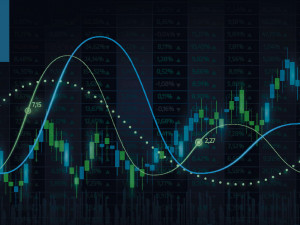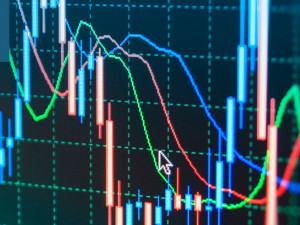
Border delays growing
Morning mid-market rates – The majors
10th February: Highlights
- No positive effect from Brexit being seen yet
- FOMC member hopes inflation of the cusp of retreat
- Supply disruption still holding economy back
Brexit, a major contributor to supply shortages
As the Government announces the end of remaining restrictions, the UK’s departure from the European Union is set to become the major hurdle to growth and output.
UK exports to Germany fell in 2021 fell by 8.5% due, according to several major businesses, to the level of friction Brexit has brought.
Those same businesses believe that they are not seeing any benefit from Brexit, simply having swapped one set of bureaucratic red tape for another.
Boris Johnson announced at the start of Prime Minister’s Questions in Parliament yesterday that the UK is on track to announce the removal of the last of the Coronavirus restrictions in two weeks, at least a month earlier than had been predicted.
Questions have immediately been asked whether this is on scientific advice or is the Prime Minister taking a chance in order to deliver the end of the Pandemic to placate those who remain uncertain if he should remain.
Factors that drive the financial markets have been lacking this week, and traders have been content to wait for data due over the next couple of days that will shape Central Bank actions.
The NIESR, which criticized the Bank of England’s inaction during the early days of the rise in inflation through complacency, will release its estimate for GDP growth in the three months to January later this morning.
Growth is expected to have fallen very slightly from 1.2% to around 1%. This is in line with expectations for the official data that will be released tomorrow.
Also due for release tomorrow are statistics for industrial and manufacturing production. These are both expected to show steady growth.
The pound continues to trade in a narrow range with little to drive it in either direction currently. Versus the dollar, it traded between 1.3589 and 1.3526 closing at 1.3537, just thirteen pips lower on the day.
Considering your next transfer? Log in to compare live quotes today.
Congress toying with Powell’s nomination
Predictions are for headline inflation to have grown to 7.3% year-on-year, up from 7% in December. Core inflation, which strips out volatile items like food and energy, is seen rising to 5.9% from 5.5%.
This continued robust growth could tempt FOMC members to decide on a fifty-basis point increase. That will set the tone for how the Central bank plans to tighten monetary policy further once it has finished the withdrawal of additional support.
Once rates have begun to rise, Jerome Powell will turn his attention to the size of the Central bank’s balance sheet, which has become bloated as purchases of Government debt and mortgage-backed securities have been the main tool of support.
By allowing current holdings to expire and not be replaced removes a major outlet and will drive rates higher.
The President of the Federal Reserve of Atlanta, Raphael Bostic, spoke yesterday of his expectation that the country is on the cusp of inflation beginning to ease naturally, possibly by the end of the second quarter.
This view was echoed by Bostic’s colleague from Cleveland, Loretta Mester who believes that inflation will come under control as the Fed tightens policy.
While headline inflation grabs commentators’ attention, the rate of change of price increases is beginning to show signs of slowing in certain sectors.
This is what is encouraging Fed Presidents to be more optimistic that the FOMC can rein in inflation in a relatively brief period.
The return of supply chains to pre-Pandemic levels will then be seen as one of two factors holding back the economy. The other is the patchy nature of the recovery in the employment market.
The past two months NFP data have provided a degree of confidence, while the next two are expected to cement that confidence.
The dollar index gave up a small amount of ground yesterday as traders await today’s data. It closed at a low of 95.55 having fallen earlier to a low of 95.38.
Inflation expected to retreat with marginal adjustment
At the end of the day, not ruling out a rate hike does not rule one in. Had the market felt that she was more serious and had possibly chosen a more hawkish tone, it would have had a significant effect on the performance of the euro.
Since the rise seen immediately following her comments, the single currency has settled back into a familiar range, running into selling pressure on any sign of growing strength.
The countries that have been most at odds with Brussels over Government spending, like Spain and Greece, appear to have been spared the glare of the EU Commission’s spotlight. That focus is now on those countries that have seen the highest rise in inflation, the most prominent being Lithuania, which is seeing prices rise at a rate in excess of 12%.
While it is impossible to force change given the overall rise in inflation and the effect of the continuing increase in the wholesale price of gas, the Lithuanian Government has been asked to reduce its public spending.
Mario Draghi’s Italy remains on Brussels’ list of over spenders, but the efforts it is making have been acknowledged. The current rate of inflation in Italy is 4.8%. This is below the Eurozone rate of 5.1%.
In Spain, inflation is rising, but the Commission does not believe that rises in public spending have been excessive. Brussels will be cautious in its criticism, knowing that these nations are going to stuffer when the ECB begins to withdraw support.
Bond prices are going to fall, pushing up interest rates that will make it both difficult to service debt and issue new bonds.
The euro remains capped by selling interest and is currently influenced by the dollar. Yesterday, it rose to a high of 1.1445, closing at 1.1428. It appears to be tethered to the 1.1420 area, below which it looks cheap in the short term, while above that level attracts short term bears.

About Alan Hill
Alan has been involved in the FX market for more than 25 years and brings a wealth of experience to his content. His knowledge has been gained while trading through some of the most volatile periods of recent history. His commentary relies on an understanding of past events and how they will affect future market performance.”



